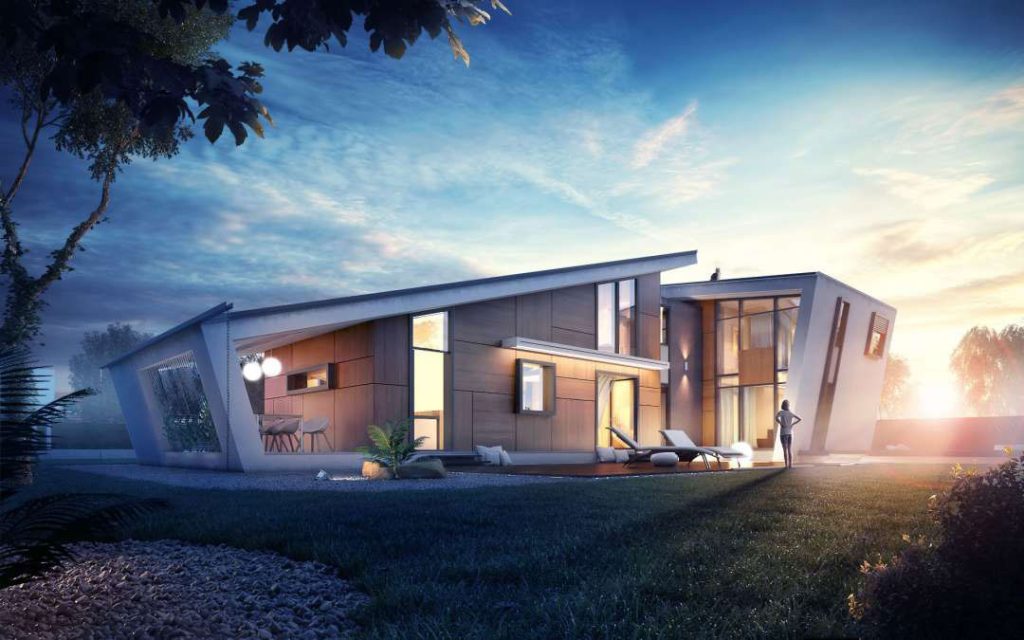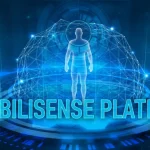Walk into any modern real estate office, and you’ll notice something interesting – the walls aren’t covered with photographs of existing properties anymore. Instead, you’ll see stunning visualizations of buildings that haven’t been constructed yet. This shift isn’t just about keeping up with trends. It’s about survival in an increasingly competitive market.
Real estate was one of the first industries to recognize the transformative power of 3D rendering services. And for good reason – when you’re asking people to invest their life savings in something that exists only on paper, showing becomes infinitely more powerful than telling.
Pre-Construction Sales: The Game Changer
Imagine trying to sell apartments in a building that won’t be completed for two years. Traditional marketing relied on floor plans, artist sketches, and a lot of imagination. Now picture walking potential buyers through a photorealistic virtual tour of their future home, complete with furniture, lighting, and views from every window.
This is exactly what’s happening in real estate markets worldwide. Developers using professional 3D rendering services report:
- 60% faster sales cycles for pre-construction properties
- 45% higher conversion rates from inquiries to sales
- 30% reduction in buyer hesitation and uncertainty
- 25% increase in average sale prices
The numbers tell a clear story: visualization sells properties.
Virtual Staging: Transforming Empty Spaces
Empty houses are hard to sell. They feel cold, uninviting, and difficult to imagine as a home. Traditional staging involves renting furniture, hiring designers, and significant ongoing costs. Virtual staging through 3D rendering offers a more flexible and cost-effective solution.
Professional rendering services can:
- Furnish empty spaces with realistic furniture and decor
- Create multiple staging options for different target demographics
- Update staging styles quickly based on market feedback
- Eliminate the ongoing costs of physical staging
Real estate agents using virtual staging report 40% faster sales and 15% higher final sale prices compared to unstaged properties.
Marketing Materials That Actually Work
In today’s digital-first world, real estate marketing happens online. Property listings with high-quality 3D renderings receive 87% more views than those with traditional photography alone. But it’s not just about quantity – it’s about quality engagement.
The read more research shows that potential buyers spend 3x longer viewing listings with professional 3D visualizations. This extended engagement translates to more qualified leads and higher conversion rates.
Essential Marketing Applications:
- Website listings and virtual tours
- Social media promotional content
- Print brochures and marketing materials
- Billboard and outdoor advertising
- Email marketing campaigns
Investment Property Visualization
Real estate investors face unique challenges. They’re often evaluating properties based on rental potential, renovation possibilities, and long-term value appreciation. 3D rendering services help investors visualize these opportunities in ways that traditional marketing cannot.
Rendering can show:
- Renovation potential and before/after scenarios
- Different layout configurations for rental optimization
- Future development possibilities
- Market positioning through visual presentation
International and Remote Sales
The global real estate market has exploded, with buyers increasingly purchasing properties in different countries or cities. 3D rendering enables remote sales by providing immersive virtual experiences that closely approximate in-person visits.
This capability has become essential for:
- International luxury real estate
- Vacation home sales
- Investment property marketing
- Corporate relocation services
Development Project Visualization
Large-scale development projects involve multiple stakeholders – investors, city planners, community groups, and potential buyers. 3D rendering helps developers communicate their vision to all these audiences effectively.
Project visualization serves multiple purposes:
- Securing investment funding through compelling presentations
- Gaining municipal approvals and permits
- Building community support for new developments
- Pre-selling units to fund construction
As real estate mogul Donald Bren once observed, “Real estate is about the most secure investment in the world.” 3D rendering helps demonstrate that security by making future properties feel tangible and real.
Customization and Personalization
Modern buyers expect personalization options. 3D rendering enables developers to show potential buyers how their unit will look with different finishes, layouts, and design options. This customization capability increases buyer satisfaction and willingness to pay premium prices.
Interactive rendering platforms allow buyers to:
- Choose between different flooring options
- Select paint colors and finishes
- Visualize furniture arrangements
- See how personal belongings will fit in the space
Property Management and Leasing
3D rendering isn’t just for sales – it’s revolutionizing property management and leasing. Landlords can create virtual tours of rental units, reducing the need for physical showings and attracting tenants more efficiently.
Benefits for property managers:
- Reduced showing time and costs
- Higher quality tenant inquiries
- Ability to market properties before they’re vacant
- Better tenant retention through visualization of improvement plans
Commercial Real Estate Applications
Commercial real estate has unique visualization needs. Office spaces, retail locations, and industrial properties require different approaches than residential marketing. 3D rendering helps commercial brokers show how spaces can be adapted for different business needs.
Commercial applications include:
- Office space layout possibilities
- Retail store design potential
- Restaurant and hospitality venue visualization
- Industrial facility optimization
ROI and Performance Metrics
The return on investment for 3D rendering in real estate is measurable and significant. Properties marketed with professional rendering services consistently outperform those using traditional marketing methods.
Key performance indicators include:
- 35% increase in online engagement
- 28% faster sales cycles
- 22% higher average sale prices
- 15% reduction in marketing costs
Technology Integration and Innovation
Modern 3D rendering services integrate with real estate technology platforms, creating seamless experiences for both agents and buyers. Virtual reality tours, augmented reality features, and interactive floor plans are becoming standard expectations.
Advanced features include:
- VR headset compatibility for immersive tours
- Mobile-optimized virtual experiences
- Integration with MLS systems
- Social media sharing capabilities
Market Differentiation
In competitive real estate markets, differentiation is crucial. Properties with professional 3D rendering stand out in crowded listings, attract more attention from buyers, and command higher prices.
This differentiation is particularly important for:
- Luxury property marketing
- New development projects
- Unique or challenging properties
- Competitive market segments
Quality Standards and Professional Excellence
The quality of 3D rendering directly impacts its effectiveness. Professional rendering services maintain high standards that enhance rather than detract from property appeal. Poor-quality rendering can actually harm sales prospects.
Quality factors include:
- Photorealistic lighting and materials
- Accurate spatial proportions
- Appropriate styling and staging
- Technical excellence in execution
Future Trends and Opportunities
The real estate industry continues to evolve, with new technologies creating additional opportunities for 3D rendering applications. Artificial intelligence, machine learning, and automated rendering are expanding possibilities while reducing costs.
Emerging trends include:
- AI-powered personalized staging
- Automated rendering from floor plans
- Real-time customization tools
- Integration with smart home technology
Measuring Success in Real Estate Visualization
Success in real estate rendering is measured by concrete business outcomes. The best rendering services understand that their work must translate to faster sales, higher prices, and better client satisfaction.
Success metrics include:
- Sales velocity improvement
- Price premium achievement
- Client satisfaction scores
- Market share growth
The Competitive Advantage
Real estate professionals who embrace 3D rendering services gain significant competitive advantages. They can market properties more effectively, serve clients better, and achieve superior results in challenging market conditions.
This competitive advantage compounds over time, as successful agents and developers build reputations for excellence and innovation.
Beyond Pretty Pictures: Business Strategy
The most successful real estate professionals understand that 3D rendering isn’t just about creating attractive visuals – it’s about implementing a comprehensive business strategy that leverages visualization to achieve specific goals.
This strategic approach involves:
- Identifying target buyer demographics
- Tailoring visualizations to market preferences
- Measuring performance and adjusting tactics
- Building long-term client relationships through excellence
The real estate industry has fundamentally changed. Properties that once sold based on location and price now compete on presentation and emotional appeal. 3D rendering services provide the tools necessary to succeed in this new reality, turning potential into profit and imagination into investment.
For more on this content, visit the rest of our blog!







